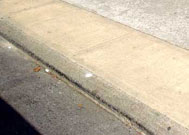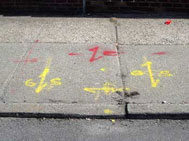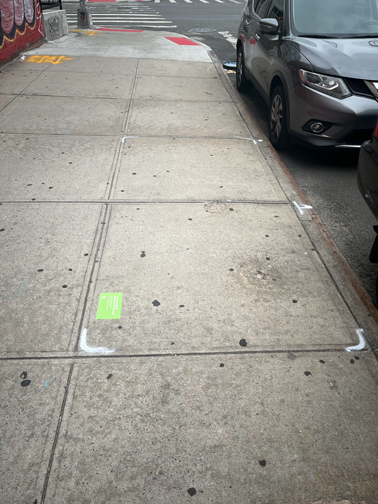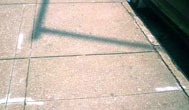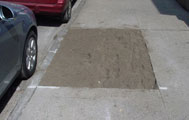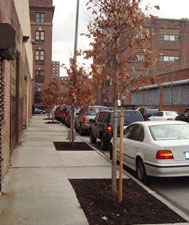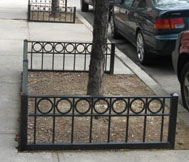Our Planting Process
NYC Parks manages the planting and care of all street trees on the public right-of-way and plants new street trees as part of a citywide initiative to green the sidewalks of New York City. Street trees make the city more livable, improve the environment, enhance public health and make the city more sustainable as our population grows. To accomplish these goals, we works with reputable nurseries to procure the optimal species for planting at each location and follows a series of guidelines when installing new trees.
How NYC Parks Plants Street Trees
Step 1: Survey
NYC Parks foresters survey every potential planting location to determine if it can accommodate the healthy growth of new trees. NYC Parks surveys neighborhoods based on a 9-year planting cycle—prioritizing blocks based on the Department of Health and Mental Hygiene’s (DOHMH) Heat Vulnerability Index. Foresters take into account local environmental conditions as well as available space and clearances for tree growth.
Step 2: Utilities
The utility companies mark the underground gas (yellow), electric (red), and telecommunication (orange) lines at the proposed planting location to ensure that the tree planting will not conflict with any of these utilities. Though a site may have been approved during the survey process, it may later be declined after the utilities are marked on the sidewalk and street.
Step 3: Marking
An NYC Parks forester and the planting contractor will then visit the planting site to mark out the future tree bed and tree location. A white "T" is painted on the curb where the tree will be planted. You may also see white marks on the sidewalk to indicate the corners of the future street tree bed. Marking of the planting location will most likely take place between February and March for spring plantings, and between September and October for fall plantings. NYC Parks places a specialized decal to indicate where tree planting is taking place.
Step 4: Site Preparation
NYC Parks' planting contractors often prepare the sidewalk before the tree is planted. You may see saw cuts in the sidewalk along the edges of the tree bed, or the concrete may even be removed entirely, leaving an open tree planting area. Preparing the site ahead of time makes it easier to plant the tree at a later date and allows the contractor to plant more trees during the short planting seasons. Don't worry if you see sidewalk preparation and the tree was not planted. The contractor will be back to plant the tree, most likely within a few weeks depending on the weather. If inclement weather prevents contractors from fulfilling their planting obligations by the end of the season, the tree bed will be addressed the following season.
Step 5: Species Selection and Tree Planting
NYC Parks Foresters work to select the optimum tree species for each planting location. A number of criteria goes into choosing which species is most appropriate, including flood/drought conditions, soil compaction/pollution, sunlight, surrounding tree canopy, sidewalk width, and clearance distance from nearby infrastructure. NYC Parks uses more than 250 different tree species and cultivars for curbside planting.
The new tree will be installed in either new or amended soil to provide improved conditions for tree health. Each tree will have two wooden stakes on either side for support, and the area around the tree will be covered in mulch to minimize weed growth and retain water.
Step 6: Guarantee and Maintenance
All street trees are cared for by our contractors for one or two years after they are planted, depending on the requirements of their contract. During this time, the planting contractor is responsible for regular maintenance of the tree, including weed removal, replacing missing soil or mulch and minor pruning. The contractor is also required to water the tree at least once every two weeks from May through October. If a tree dies during the guarantee period it will be replaced in the next planting season. New Yorkers are strongly encouraged to help water street trees weekly during the warmer seasons, 20 gallons or more, for the first 3-5 years after planting.
New Yorkers are strongly encouraged to perform basic tree care to promote the healthy growth of the tree. Visit our NYC Tree Map to find out how to take care of trees near you.
Procuring Trees
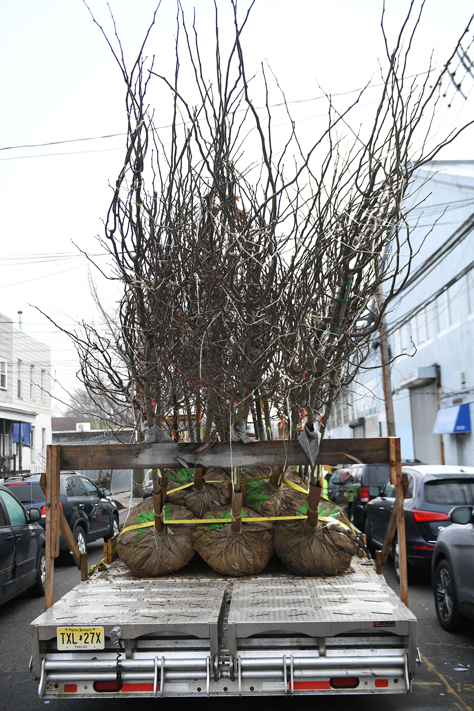
We work with experienced tree growers to make sure that only the healthiest and strongest specimen and species are selected for planting—beautifying our sidewalks, shading our streets, and providing New Yorkers with a host of benefits for many years to come.
The process has three major advantages for New York City:
- A high-quality standard for tree planting that is leading the industry.
- A wider array of tree species that have not previously been available. With this expanded selection that better meets the broad diversity of planting locations throughout the city, Parks is now able to more accurately match "the right tree for the right location."
- Parks now has a direct conduit to a wealth of knowledge via the staff at each nursery. Our partner nurseries have extremely dedicated and talented people working for them who collectively have hundreds of years of experience, which means that if we have a question we cannot answer within our office, the nurseries are just a phone call away!
